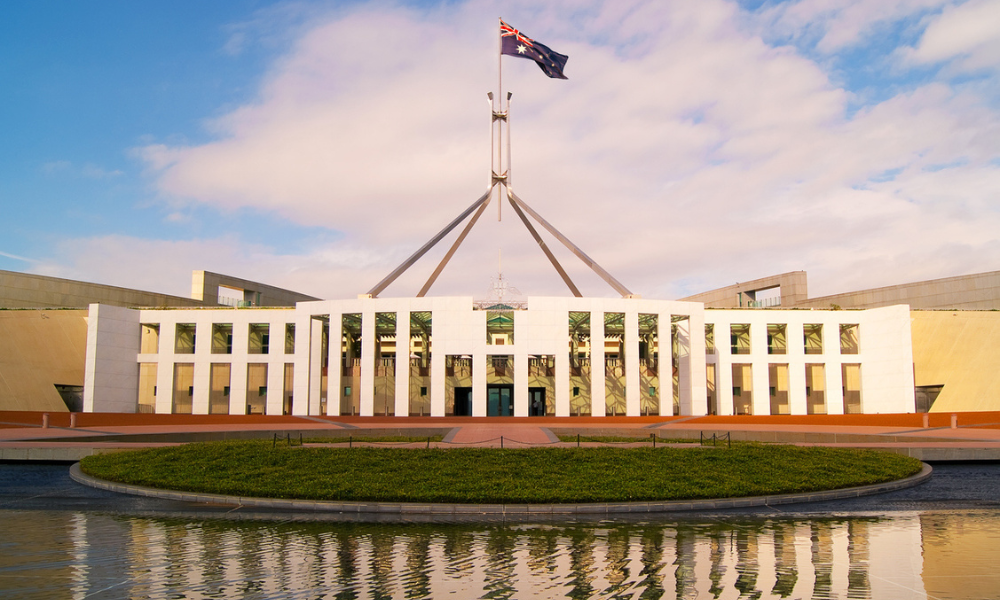Human Resources magazine’s study of the top ASX-listed companies in Australia has shed light on the business of people management within Australia. In the second of a three-part series, Craig Donaldson looks at trends in the structure of HR functions and examines its influence at board and management levels
Human Resources magazine’s study of the top ASX-listed companies in Australia has shed light on the business of people management within Australia. In the second of a three-part series, Craig Donaldson looks at trends in the structure of HR functions and examines its influence at board and management levels
Many clamour about the need for HR to sit on the board. This is seen largely as a reflection of the level of importance HR is afforded – that a company is willing to take the input of HR seriously at the most senior levels.
In Human Resources magazine’s latest study of Australia’s top ASX-listed companies, not one head of HR sat on the board of the head company. There was a similar result when we conducted this survey first in 2003 and again in 2005. However, HR representation at board level is not necessarily a reflection of HR’s importance.
Australian boards tend to follow US models and are principally made up of non-executive rather than executive directors. This is partly for reasons of independence. In the past, the theory was that the interests of the executive or management are not necessarily in alignment with shareholder interests. So an independent board will regulate self-interested behaviour and be more likely to optimise the company’s performance. Most companies in Australia’s top ASX-listed companies tend to have just one executive board member – the CEO.
While no HR head sits directly on the board of the parent company itself, AMP’s Peter Hodgett, general manager of HR and strategy, sits on the board of subsidiary, AMP Life. A handful (less than 10 per cent) of other HR heads sit on various board committees, usually dealing with remuneration and other HR related matters such as OHS and risk management.
On a more positive note, two-thirds of HR heads sit on executive management teams within Australia’s top ASX-listed companies. The figure suggests that HR, once considered something of an awkward adolescent as a profession, seems to have come of age and is increasingly recognised and included alongside its corporate peers such as finance and audit, business development, IT and general counsel. Executive management committees are primarily responsible for recommendations to the board on company policies, priorities and budgets. They play a key role in driving strategy development and accelerate the implementation of collectively identified, commercially prioritised work.
Reporting structures
Perhaps of equal or more importance is reporting structures. HR – the old-fashioned ‘warm and fuzzy’personnel function has traditionally been at odds with finance – the hard-nosed, eagle-eyed spendthrift, demanding budgetary accountability for every dollar spent.
However, HR will more likely report through to a CEO or MD than a CFO in a company that takes a more enlightened approach to HR and people management. Our survey found that the large majority (70 per cent) of HR functions report directly to the CEO/MD. In 2005, 61 per cent of HR functions reported to the CEO/MD, which suggests that HR issues are of increasing importance at an executive level.
A report from The Corporate Leadership Council in August 2004 suggests this reporting line helps to promote teamwork in HR and centralise decision making. Furthermore, reporting to a CEO or MD who is supportive of HR issues can also help increase organisational efficiency, economies of scale, cost minimisation, risk minimisation and reinforcement of corporate values.
Only 5 per cent of HR functions report through to the CFO, while 10 per cent report to the COO and 15 per cent report to other heads within the company, such as company secretaries or hybrid executive roles combining HR and marketing, or enterprise capability, for example. Interestingly, some have dual reporting responsibilities, with John Scriven, HR director for Coca-Cola Amatil, reporting to the Group CEO as well as the MD for Australia and New Zealand.
To centralise versus decentralise?
The centralising and decentralising of HR seems to go in cycles. It can take a number of years, but centralised HR tends to be flavour of the month one year, and a few years later it’s been relegated to the HR fad bin.
It usually depends on the industry as to whether or not a company chooses to centralise or decentralise its HR function. A centralised HR structure can offer greater HR expertise and has the potential to be more efficient through economies of scale. Companies with centralised HR functions mostly came from defensive stock market sectors such as finance and IT.
On the other hand, decentralised or hybrid functions tend to be more popular in industries in which their operations are not that related. With a diverse group of businesses, for example, people management practices are often best determined by the businesses themselves, and not by a head office, which would otherwise house a centralised HR function.
Our survey found that 52 per cent of companies have a centralised HR function, while 28 per cent have a hybrid function and a further 16 per cent decentralise HR operations. In the 2005 survey, 46 per cent of companies said their HR function was centralised, while 26 per cent of companies described it as decentralised and a further 26 per cent had a hybrid function. This suggests a trend towards centralised HR functions and a strong shift away from decentralised HR.
ACP (Australian Consolidated Press) is one company with a centralised HR function. Judith Peake, human resources director for ACP Magazines, says HR has been centralised for a number of years within the company, but it was “quite ad hoc” prior to this. “I think you will find that’s not unusual for the media industry. Over the past few years, the industry has realised the need for a strong HR function within their organisations. This is based on the growth of the media industry as well as increased competition.”
Bruch Brown, human resources manager for Primelife Corporation, Australia’s largest provider of retirement home accommodation, also runs a centralised HR function. “It does fit the nature of the business better. We’ve got a corporate head office, with other offices scattered across the country. So it makes sense.” Primelife Corporation also has one HR practitioner embedded within its aged care division, who reports through to Brown.
Qualifications and affiliations
When it comes to academic qualifications, HR is a bit of a motley crew compared to other professions. Unlike accounting or law, with a strongly defined professional history and strict qualifications for entry and practice, the standards of entry for HR are not necessarily as high.
Sixty per cent had bachelor degrees, followed by masters (18 per cent), MBAs (13 per cent), graduate diplomas (18 per cent) and PhDs (3 per cent). Twenty-six per cent of HR heads actually had HR qualifications, followed by commerce/economics (20 per cent), business (10 per cent), psychology or science (7 per cent) and then social science or law (5 per cent). Interestingly, many HR heads only had graduate diplomas or certificates in HR, in addition to more heavyweight degrees or MBAs in other fields, which suggests HR has been an ‘add on’ to their professional education.
ACP Magazines’ Peake, who holds a bachelor of business and masters of commerce, believes her qualifications have helped her gain a stronger commercial understanding of business. “It’s really about providing the business with the business needs and not with HR needs, if you like. You have to find tools and solutions for the business and assist in that way. You can’t really do that unless you have an appreciation for what those business constraints and aspirations are,”she says.
Phil Taylor, head of human resources for The GPT Group, one of the largest property groups in Australia, holds a bachelor of economics as well as a masters of commerce in HR. The economics degree has provided Taylor with more of a commercial outlook than other HR practitioners, he says. “I come to HR with the view that it’s a function that’s there to help solve business problems. It’s not HR for HR’s sake, if you know what I mean,” he says.
“Doing the Masters in HR helped to fill in a lot of gaps around my HR skill-set and knowledge base. It gave me the confidence to feel that I could handle pretty much any HR problem that could come up.”
The heads of HR in Australia’s top ASX-listed companies also have a mixed bag of professional affiliations and memberships, the survey found. Only 18 per cent were members of the Australian Human Resources Institute (AHRI) while others belonged to associations and institutes such as the Australian Institute of Management, the Australian Institute of Company Directors (AICD) and the International Society for Performance Improvement (ISPI).
“I’m not a member of AHRI or anything like that. I’ve never seen the real benefit of it at this stage,”says Primelife Corporation’s Brown.
Taylor let his AHRI membership lapse after turning to other sources for professional development. “I used to be a member of AHRI but I just let it slip. I thought it was a good organisation, but I think I was getting more out of other sorts of sources of information. I was doing a lot of reading of different writers on management, like Stephen Covey, Charles Handy and Jim Collins. I did find some of the things in AHRI a little bit basic,” he says.
Additional reporting by Melinda Finch.








